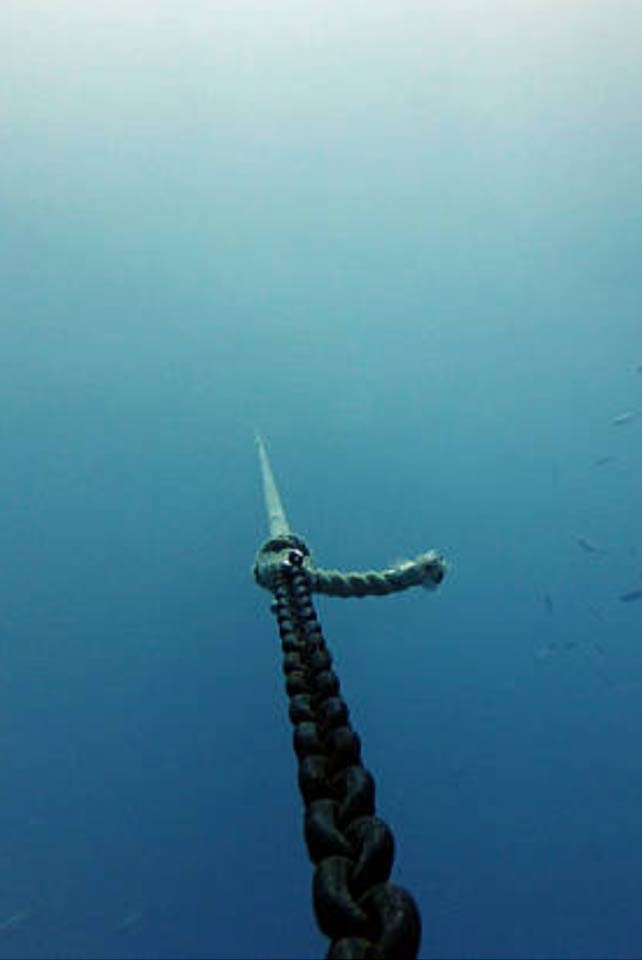The main and ONLY advantage of the anchor chain line is that it is the only and perfect mean to avoid chafing of the anchoring rode on aggressive sea beds. Except for this point, anchor chain has all the disadvantages.
Stored in the bow mooring chain locker, this anchor chain adds a heavy weight in the last place you want one. When deployed, anchor chain is actually working in the opposite way to the way it should work. With light wind, it gives a perfect horizontal pull to the anchor and the best holding. With moderate wind, its weight and catenary effect give a perfect shock absorbing effect.
As the wind builds up, the anchor chain will become straighter (and this with as little as 25/30 knots of wind). The pulling angle will increase and as a consequence, the holding of the anchor will decrease. When the shock absorbing effect is most necessary, the "bar tight" chain will not allow this to happen.
If there are waves entering the anchorage, the resulting shocks will be then directly transferred to the anchor chain, which then has more chance to break free... and more seriously, the anchor chain is subject to high "peaks" of pulling force and has a consequently higher risk of breaking...

During the last seven and half months, I spent 129 days anchored (out of 228) in 61 different anchorages. The mean water depth was 6.50 meters and the scope 5/1. The total length of the anchor chain was about 30 meters, of which 23.5 meters was lying on the bottom (30 - 6.50 m) Therefore, I believe a length of about 25 meters is perfect. If the water height is less, then you will be anchoring with an all mooring chain line... if the wind build up, you can pay out more scope but the wind will push the boat and the mooring chain will not chafe on the bottom.
Holding is in direct relation to the pulling length of the rope... (Or more accurately, the pulling angle). Generally speaking, with a scope of 4/1 you will have about 55 % of the maximum holding of the anchor, with a scope of 6/1 about 70 % with a scope of 8/1: 80 % and with 10/1 about 85 % the maximum. - 100% holding will be achieved with a horizontal rope or an "Infinite/1 scope.
Increasing the scope will be efficient up to 10/1 - With more than 10/1; a large increase in the scope will give only a negligible increase in holding. Therefore, the total length of the rope has to be adapted in relation with the conditions you are expecting to meet, and should be about ten times the maximum depth you expect have to anchor in. (I suggest 100 meters).
Natural fibers are no longer used. Of the artificial fibers, the one which has the best elasticity (shock absorbing effect) is polyamide (Nylon, Perlon, Enkalon). As the breaking strength of 10 mm chain is 5 tons, a 16 mm polyamide line will be well suited. (Breaking strain 5.6 tons). Don't oversize the rope. Yes, you will increase the strength, but at the same time you will decrease the elasticity... and "elasticity" is the secret. You have the choice of three strand rope or eight strand rope (also called "square line"). Eight strand rope is better.
When using a windlass the most common method it the Rope to Mooring Chain Splice and more specifically the Backsplice.